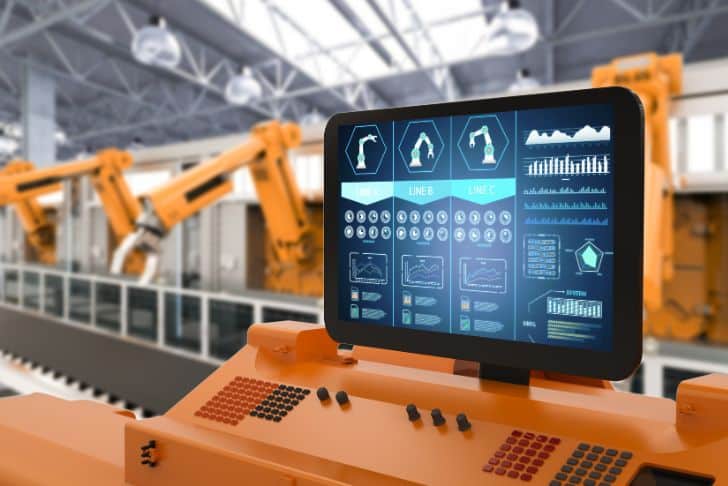“Understanding Workflow Automation and its Benefits” is a comprehensive view into the fascinating world of software utilization to automate tasks and activities, thereby boosting efficiency and productivity. The article encompasses everything from the conversion of emails and form fills into service requests to workload distribution and appropriate routing. It also discusses the many advantages of this—improved collaboration and communication, enhanced accuracy, larger savings, and even increased productivity. You’ll also be introduced to the pivotal steps of automating a workflow, right from understanding the workflow’s initiating and terminating points to deploying, monitoring, and optimizing it.
Additionally, the article sheds light on the close-knit relationship between Workflow automation and Robotic Process Automation (RPA) while offering invaluable insights into choosing the ideal workflow automation software. Whether you’re seeking features, integration capabilities, or a broad range of automation, this article provides all the details you need. Pipefy, a tool designed to handle workflows, optimize processes, and deploy automation, also makes a noteworthy appearance in this informative discourse.
The Concept of Workflow Automation
Workflow automation is a powerful and innovative strategy, employed in many industries to streamline operations and boost efficiency. But what exactly does it mean?
Understanding the definition of workflow automation
At its core, workflow automation involves implementing settings into a software system that automatically manage or complete routine tasks. This could be anything from email responses to data backups. The goal is to reduce the burden of mundane, time-consuming tasks on your workforce.
The role of software in workflow automation
Without robust, understandable software, workflow automation is impossible. Specialized software is engineered to handle cyclical tasks, replacing what could be hours of manual work with a few simple programmed commands. This kind of technology fundamentally alters the way businesses operate, letting them focus on essential tasks instead.
Typical activities automated using Workflow Automation
Numerous tasks can be simplified through workflow automation. For instance, emails and form fills can be automatically converted into service requests, highly reducing the manual requirement. Work items can be routed to the appropriate person or department, without the need for human direction. Alerts and notifications can be set up when work approaches its deadline, promoting punctuality and accountability.
Benefits of Workflow Automation
Shifting to automated workflows may feel like a big step, but the incentives are profound.
Power of higher productivity via automation
Workflow automation drastically increases productivity by reducing manual labor. When repetitive tasks are automated, employees have more time to focus on complex tasks that require human expertise, leading to a more efficient workforce.
Prospect of significant cost savings
When productivity increases and fewer hours are spent on routine tasks, costs inherently decrease. This frees up resources that can be diverted to other priority areas of your business.
Scalability and efficiency advantages
The beauty of automation is that it scales effortlessly. This means that if your workload increases, the software can handle it without any additional work on your end. This brings about heightened operational efficiency, supporting your business’s growth seamlessly.
Collaboration and communication improvement
Automated workflows enhance communication by ensuring that the right person receives the right information at the right time. They also encourage collaboration because tasks that require multiple personnel are handled efficiently.
Enhancement of accuracy in work processes
Human error is often a necessary evil when it comes to manual tasks. However, workflow automation minimizes such instances, ensuring that your processes are accurate, reliable, and consistent.

Steps to Automate a Workflow
Ready to enjoy the benefits of automation? Here are the steps you should follow:
Understanding the workflow’s starting and ending points
This step requires you to have a clear understanding of your current workflow process. What are the routine tasks you want to automate, and where do they start and end?
Identifying actors and systems involved
How does the workflow process unfold, who are the key players, and what systems do they use? Understanding the whole picture will help you effectively automate your workflows.
Creating an automation wishlist
Now’s the time to dream. What would you like automation to handle? The more you can offload to your automation software, the more time you’ll save.
Building, testing an optimized workflow version
Once you know your needs, you can start building a more efficient system. Remember to test every workflow you automate. Regular checks and testing ensure that the system is working as intended.
Teaching users about automated workflow
Training is integral to the success of your automation. Users need to understand how to work with the new workflow, how to manage it, and how to troubleshoot common issues.
Deploying, Monitoring and Optimizing the automated workflow
Deploy the new automated workflows and continuously monitor their performance. Optimizing on the go ensures that your workflows remain efficient and meet your business needs.
Coordination of Workflow Automation and Robotic Process Automation (RPA)
To efficiently digitize your operations, a combination of workflow automation and Robotic Process Automation (RPA) can work wonders.
Understanding Robotic Process Automation (RPA)
RPA refers to the use of software robots or ‘bots’ to automate highly repetitive tasks. These bots mimic human interaction with computer systems, providing significant time and cost savings.
Similarities and differences between Workflow automation and RPA
Both Workflow automation and RPA aim to automate tasks, yet they have distinct methods. Workflow automation focuses on streamlining processes such as approvals and escalations, while RPA mainly duplicates human activities on a computer system.
The combined benefits of Workflow Automation and RPA
Combining these two can revolutionize operations by not only automating tasks within certain software but also tasks conventionally requiring human input.

Features of Workflow Automation Software
The right software is the backbone of worry-free workflow automation.
Defining a Workflow Automation Software or Workflow Management System
Workflow automation software, or workflow management systems, are applications designed to facilitate the automation of standard business processes or workflows. They organize and control the tasks and activities involved in a business process.
Key features that an ideal Workflow Automation Software should have
A top-flight workflow automation software will feature automated alerts, visual workflow management, integration with other software, robust reporting capabilities, and user-friendly interfaces.
Software Integration capabilities for wider automation coverage
Seamless integration with other software widens the reach of automation. Automation software should work with the other tools you use daily (like email or CRM) to create a streamlined workflow environment.
Choosing the Right Workflow Automation Software
Think about the features that best suit your needs when choosing a workflow automation software.
The importance of low-code capabilities in software selection
The ability to build workflows with little coding know-how is a boon. Low-code software improves efficiency since non-technical teams can also build workflows.
The role of user-friendly forms and portals
Complex interfaces can be discouraging. With user-friendly forms and portals, employees can quickly and easily manage workflows.
The power of system integrations
Depth and breadth are crucial when it comes to integration. Integrations enable your workflow to function seamlessly across various platforms.
The need for rules and conditional logic
Business processes aren’t always straightforward. Rules and conditional logic help in managing diverse scenarios.
The benefit of a gallery of templates
A robust gallery of custom and pre-made templates speeds up the automation process. These can be a great time saver for common workflows.

Case Study: Pipefy as a Workflow Automation Tool
Pipefy is a powerful tool for automating workflows, particularly favored for its user-friendly interface and robust features.
Introduction to Pipefy
Pipefy is a platform that empowers managers to build and execute any workflow through a Kanban-style user experience.
How Pipefy facilitates Workflow automation
It offers no-code automation, allowing teams to streamline their workflows by setting up trigger-based actions, for example, automated alert emails.
Process optimization through Pipefy
Pipefy helps simplify complex workflows and reduce manual execution of tasks, significantly decreasing the chances of errors.
Rolling out Automation with Pipefy
Whether you are a small business or a large enterprise, Pipefy allows you to start small and grow as your needs evolve.
Challenges in Implementing Workflow Automation
Despite its many benefits, implementing automated workflows is not without challenges.
Potential difficulties during setup and transition phase
Change can be a daunting task. Transitional periods may cause temporary disruption in operations.
Risk of malfunctions due to software issues
No software is immune to glitches. Faulty scripting could lead to errors that might disrupt workflows.
Employee resistance to tech-based changes
Adapting to new technologies is not always easy, especially for employees accustomed to traditional work methods. Resistance can hamper the success of an automated system.
Ensuring software compatibility and integration
The chosen software must be compatible with your existing tools. Seamless integration ensures smooth functioning of automated workflows.
Future of Workflow Automation
The world of workflow automation is constantly evolving, leveraging advancements in technology and software capabilities.
Emerging trends in Workflow Automation
AI-powered chatbots, mobile-ready workflows, cloud-based software, and an increased focus on UI/UX are exciting trends in workflow automation.
Influence of AI and Machine Learning on Workflow automation
Artificial Intelligence and Machine Learning are promising domains that can raise automation efficiency, taking over data collection, analysis, and predictive tasks.
Potential advancement in automation technologies
Advancements in natural language processing, cloud computing, and low-code development platforms are set to push the boundaries of what is possible with automation.
Wrapping Up: Embracing Workflow Automation
Workflow automation is quickly becoming a necessary evolution for businesses.
The critical role of Workflow Automation in Organization
Automation streamlines processes, implicating a significant impact on business efficiency, profitability, and sustainability.
How to gradually introduce Workflow Automation
Start by identifying repetitive tasks, choose the right software, and implement from one department before extending it to others. Slow and steady can win the race!
Sustaining and improving Workflow Automation over time
Monitor and review your workflows from time to time. Make adjustments as needed to sustain efficiency. Remember, workflow automation is an ongoing process, not a one-time task.
There you have it, everything you need to know about workflow automation. With right choices and persistent efforts, you, too, can harness its power and drive your business to new heights!
